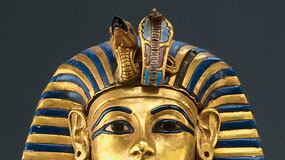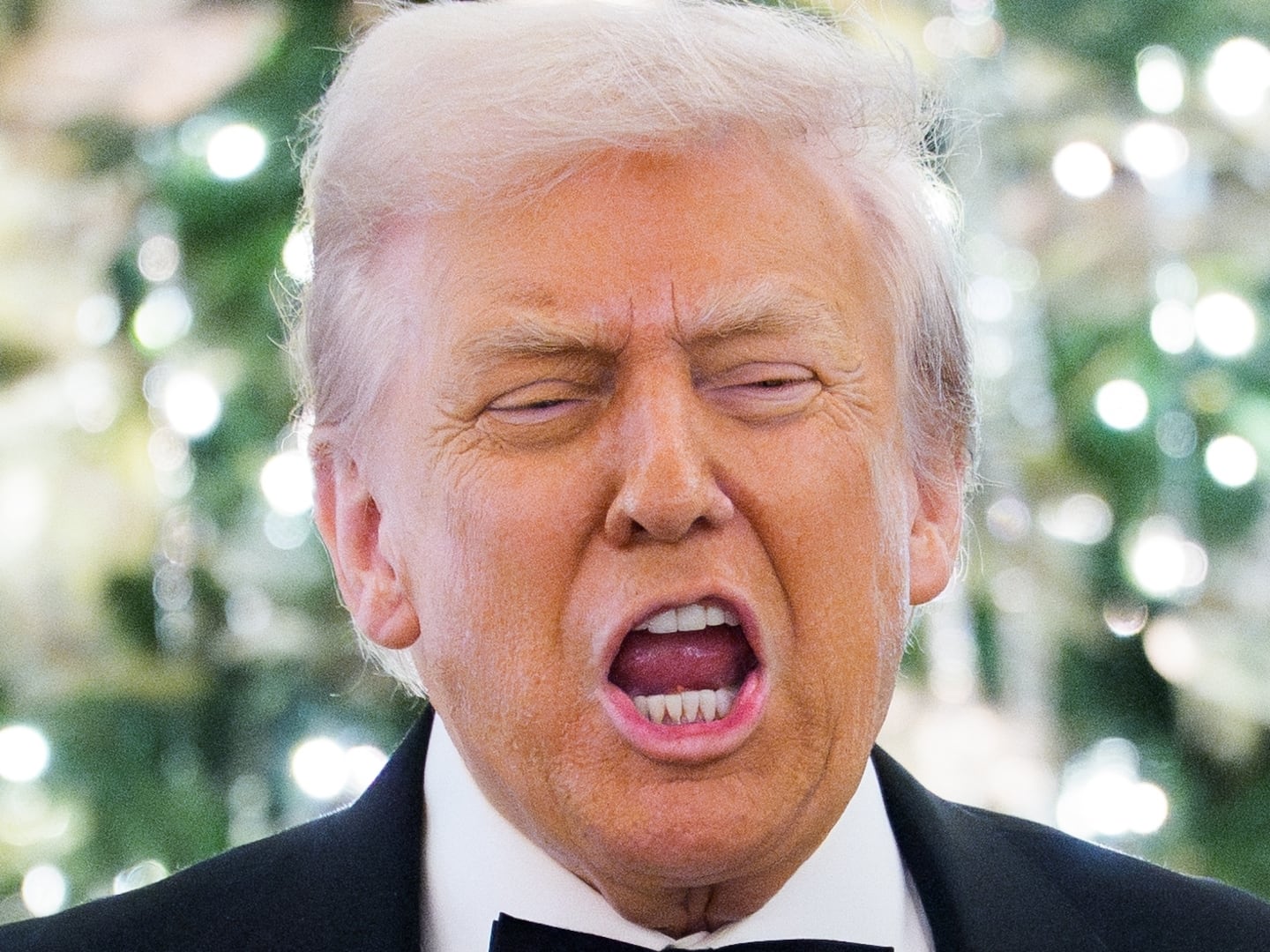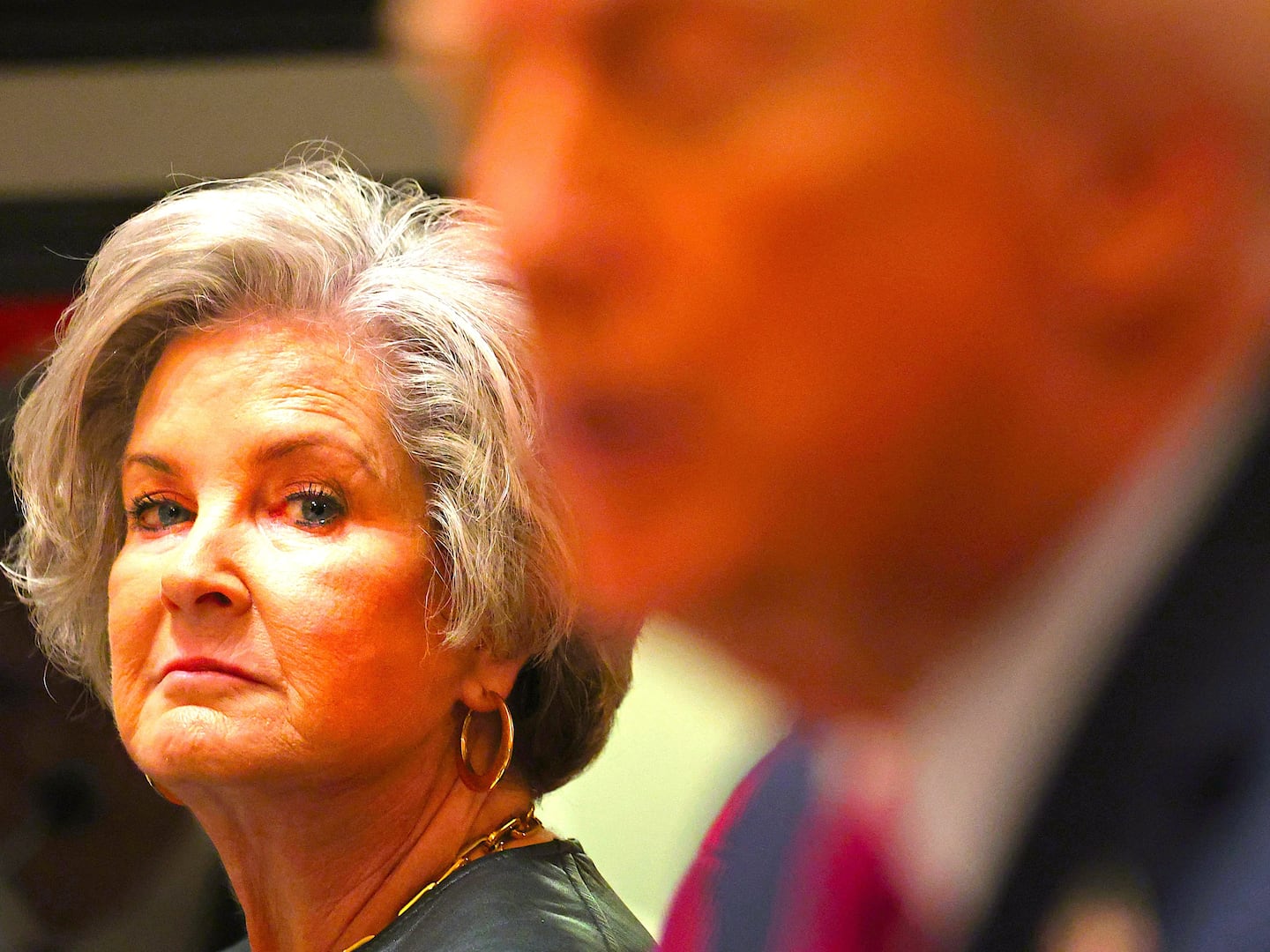
Tutankhamun possessed four miniature coffins fashioned of gold and inlaid with colored glass and semi-precious stones. Each stood in a separate compartment in an alabaster chest. A band of inscription running down the front names Imseti— one of the sons of Horus—and the goddess Isis, who would protect the deceased and the particular mummified organ within, in this case the Pharaoh’s liver. The cartouche encircling the king’s name on the interior originally named one of Tutankhamun’s relatives and was reworked to name the boy king, indicating that he died quickly and unexpectedly. (15.55" x 4.33" x 3.93")
Andreas F. Voegelin, Antikenmuseum Basel and Sammlung Ludwig Dynasty 18, Reign of Tutankhamun
Tutankhamun possessed four miniature coffins fashioned of gold and inlaid with colored glass and semi-precious stones. Each stood in a separate compartment in an alabaster chest. A band of inscription running down the front names Imseti— one of the sons of Horus—and the goddess Isis, who would protect the deceased and the particular mummified organ within, in this case the Pharaoh’s liver. The cartouche encircling the king’s name on the interior originally named one of Tutankhamun’s relatives and was reworked to name the boy king, indicating that he died quickly and unexpectedly. (15.55" x 4.33" x 3.93")
Andreas F. Voegelin, Antikenmuseum Basel and Sammlung Ludwig Dynasty 18, Reign of Tutankhamun
The golden diadem, inlaid with colored glass and semi-precious stones, was still around the head of Tutankhamun when Howard Carter opened the royal coffin (in 1922) more than 3,200 years after the young king died. The two protective deities, represented by the vulture and the cobra, which originally projected from the front had been removed and placed near the thighs of the mummy to allow the golden face mask to be put into place. (Diadem 15.98" x 9.72", Headband 8.07" diameter 7" x .86", Appendages back 10.90" x 12.51", Appendages side 5.86" x 5.86")
Andreas F. Voegelin, Antikenmuseum Basel and Sammlung Ludwig Dynasty 18, Reign of Tutankhamun
Carved of wood and then covered in gesso and painted, this bust of Tutankhamun portrays the young king as a youthful figure rather than a divine being. Although wearing a royal crown with the cobra deity projecting at his brow, he has on a simple linen shirt through which the upper part of his rib cage shows. The bust has a pleasant smile, and his earlobes are pierced, a custom for both males and females during this period. The excavators suggested that the enigmatic statue may have served as a clothes dummy on which garments of the king could be draped or his jewelry displayed. It may also be possible that it served another function, since busts not unlike this are known to have been used during both earlier and later eras in certain religious rituals. (30.31" x 16.33" x 11.92")
Andreas F. Voegelin, Antikenmuseum Basel and Sammlung Ludwig Dynasty 18, Reign of Tutankhamun
This calcite bust of the king depicts Tutankhamun wearing the nemes headdress. Red and black paint are used to highlight features of the face, as well as the two protective vulture and cobra deities projecting from his brow. The recessed base below the shoulders indicates that the bust served as a stopper for one of the four cylindrical hollows of the canopic chest, in which the mummified organs of the king were stored in separate coffinettes. (9.44" x 7.28")
Andreas F. Voegelin, Antikenmuseum Basel and Sammlung Ludwig Dynasty 18, Reign of Tutankhamun
This statuette of the king wearing the tall crown of Upper Egypt is made of wood covered in gesso and then gilded. It is among 35 ritual figures of the king and deities that were placed in sealed wooden shrines in the tomb. The color combination of the gold of the figure and the black of the base suggests both rebirth and regeneration. The crook he holds in his left hand and the flail he grasps in his right are symbols of his kingship. (Statuette 24.38" x 5.38" x 4.75", Base 2.63" x 4.75" x 11.38")
Andreas F. Voegelin, Antikenmuseum Basel and Sammlung Ludwig Dynasty 18, Reign of Tutankhamun
Almost identical to the gilded figure depicting the king of Upper Egypt, this golden statuette portrays Tutankhamun wearing the crown of Lower Egypt. He holds the symbols of his office, the crook and the flail, and both are composed of gilded bronze, as are the sandals he wears. The figure stands on a black base, and was originally covered in linen and placed within a wooden shrine. (Statuette 24.80" x 5.11", Base 2.36" x 4.72" x 12.28")
Andreas F. Voegelin, Antikenmuseum Basel and Sammlung Ludwig Dynasty 18, Reign of Tutankhamun
Howard Carter discovered this small golden chest in the shape of an ancient shrine in the Antechamber of the tomb. It is made of wood covered in sheet gold, and the base is plated in silver. A wooden stand with a gold-plated back support stood inside, but the statuette it originally supported no longer exists; carved footprints for it are still visible on the base. Scenes on the insides and outsides of its walls, back and doors depict the king and queen in a variety of activities, some of which may be associated with festivals, sexuality and eternal life. (Shrine 19.88" x 12.08" x 18.89", Base 9.76" x 1.96" x 4.40")
Andreas F. Voegelin, Antikenmuseum Basel and Sammlung Ludwig Dynasty 18, Reign of Tutankhamun
Found on the mummy of Tutankhamun, this golden collar in the shape of a falcon with outstretched wings was one of several items of amuletic jewelry placed around the neck of the king. Fashioned of sheet gold, it has been cut into the form of the god Horus, a deity identified with the kingship and the solar religion. Details of the feathering on its body appear in carefully engraved details. A gold wire attached to the two wings encloses the circlet, and a counterweight is suspended from a loop at the back. (Collar 10.43" x 11.92", Counterweight 3.74" x 1.57")
Andreas F. Voegelin, Antikenmuseum Basel and Sammlung Ludwig Dynasty 18, Reign of Tutankhamun
Carved of calcite, this unguent or cosmetic vessel has details of sheet gold, colored pigment and colored ivory. On its lid is a recumbent lion with the cartouche of the king inscribed near its shoulder. Perhaps a symbol of Tutankhamun, the lion is atop the vessel, while four of the traditional enemies of Egypt are trapped at the base, represented only by their heads. Two columns are applied to the vessel, and each is surmounted by an image of the god Bes, protector of households. These architectural features also serve as frames for the two scenes depicting fighting animals in a band around the central section of the jar. (10.51" x 8.66")
Andreas F. Voegelin, Antikenmuseum Basel and Sammlung Ludwig Dynasty 18, Reign of Tutankhamun
This vibrant jewel is a rebus for the throne name of Tutankhamun—Nebkheprure—which can be translated as “Re is lord of manifestations.” It was found, along with a number of pectorals within a chest in the Treasury. The framework and backing are of gold with inlays of semi-precious stones. At the bottom is a basket, the hieroglyph for “all” made of turquoise. Above this is a lapis lazuli scarab beetle meaning “creation” or “manifestation” with three vertical lines below to make it plural. A carnelian sun disk, symbol of the Sun God Re, is pushed up and forward by the beetle’s front legs. Gold; semiprecious stones Height 9cm; width 10.5cm 18th Dynasty, reign of Tutankhamun Thebes, Valley of the Kings, tomb of Tutankhamun (KV62)
Andreas F. Voegelin, Antikenmuseum Basel and Sammlung Ludwig Dynasty 18, Reign of Tutankhamun
Tyuja was King Tut's great-grandmother. The exterior of the coffin depicted Tjuya wearing a tripartite wig, its strands indicated with impressed lines. Her eyes were inlaid with obsidian and calcite set into blue glass, with red in the corners to indicate capillaries. The flowers and petals that form the beads of her broad collar are of gold and inlaid glass. Gilded wood Length 218/5cm; width 67.5cm; height 100.8cm 18th Dynasty, reign of Amenhotep III Thebes, Valley of the Kings, tomb of Yuya and Tjuya (KV46)
Andreas F. Voegelin, Antikenmuseum Basel and Sammlung Ludwig Dynasty 18, Reign of Tutankhamun




